Ansel Adams Award
The Wilderness Society’s Ansel Adams Conservation Award is presented to a current or former government official who has shown exceptional commitment to the cause of conservation and the fostering of an American land ethic.
The first award was given to Ansel Adams in 1980. Since then, former recipients include President Jimmy Carter, Vice President Al Gore, Senator Maria Cantwell, CEQ Chair Katie McGinty, Congressman John Lewis, Governor Jerry Brown and Chairman Raúl M. Grijalva.
Past events:
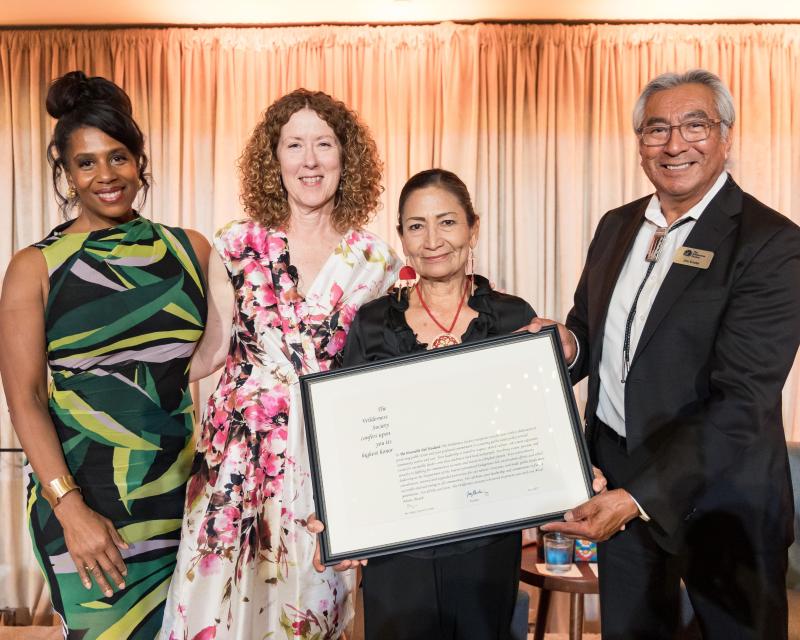
2025 Ansel Adams Award
On June 25th, 2025, former Secretary of the Interior Deb Haaland received the Ansel Adams Award for her historic and visionary leadership in public lands protection, tribal co-stewardship and climate action.
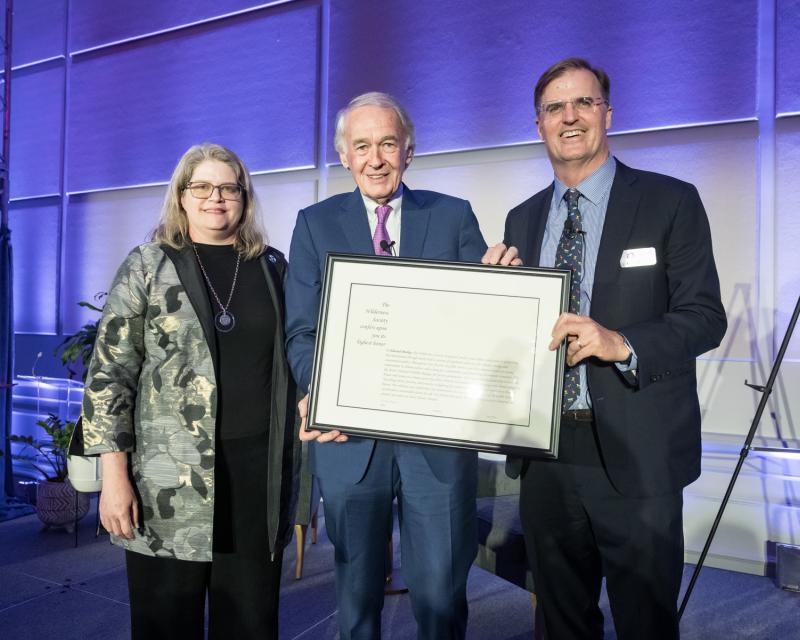
Chris Ferenzi Photography
2024 Ansel Adams Award
On June 26th, 2024, Senator Edward Markey received the Ansel Adams Award at the Renwick Gallery for his profound and lasting commitment to the health of our nation’s public lands and natural resources.
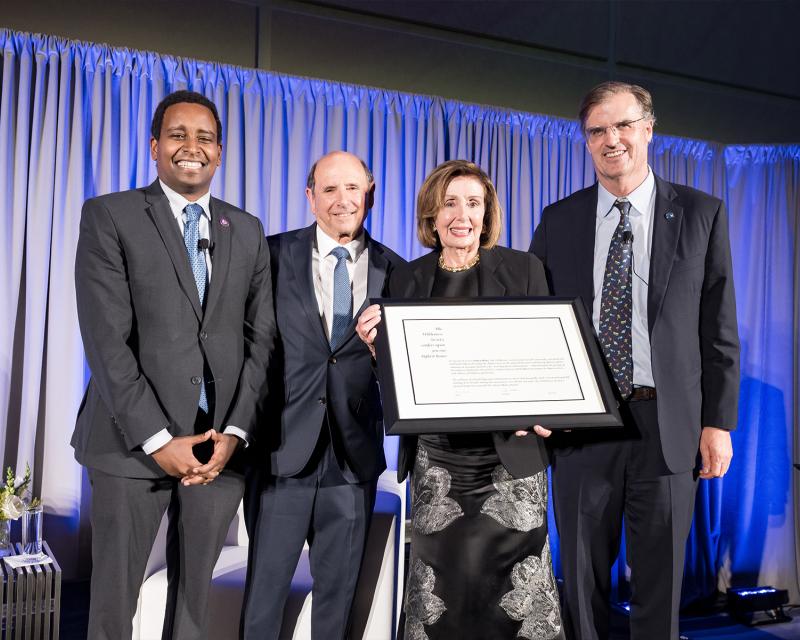
2023 Ansel Adams Award
On June 23, 2023, Speaker Emerita Nancy Pelosi received the Ansel Adams at The Renwick for her pivotal role in the passage of conservation and environmental protection legislation during her history-making Speakership.
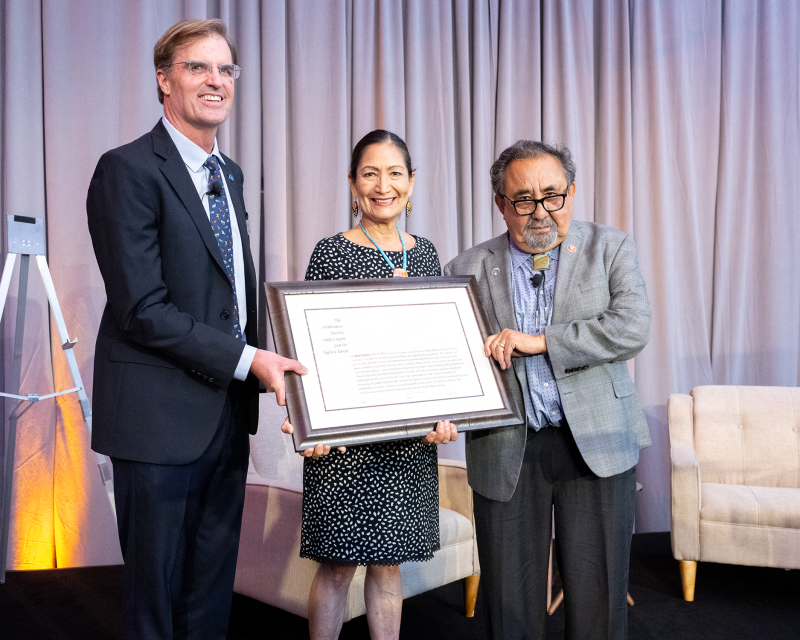
Chris Ferenzi
2022 Ansel Adams Award
On June 23, 2022, Rep. Raúl Grijalva received the Ansel Adams Award at The Renwick Gallery, for his four decades of public service, including nearly 20 years in Congress.
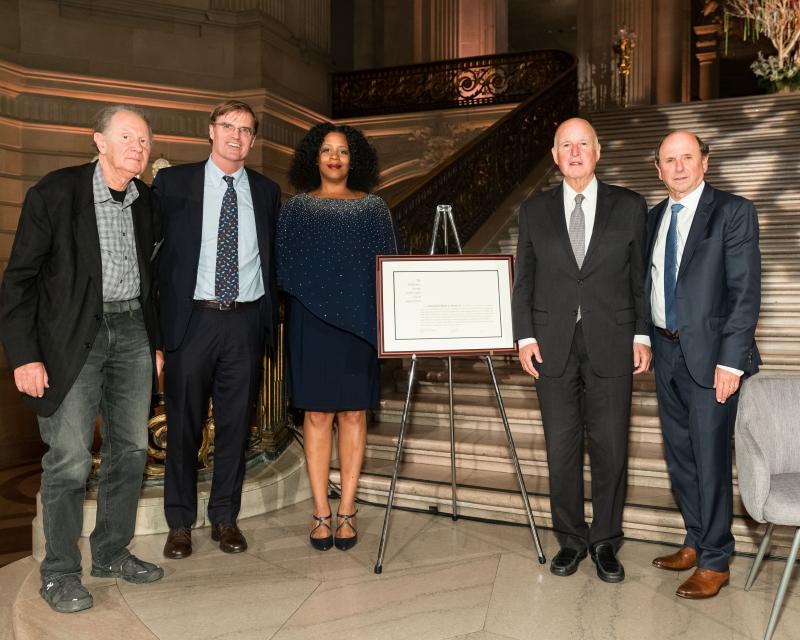
Drew Altizer
2019 Ansel Adams Award
On Thursday, June 27, 2019, at the San Francisco City Hall, TWS honored Edmund “Jerry” G. Brown, Jr.
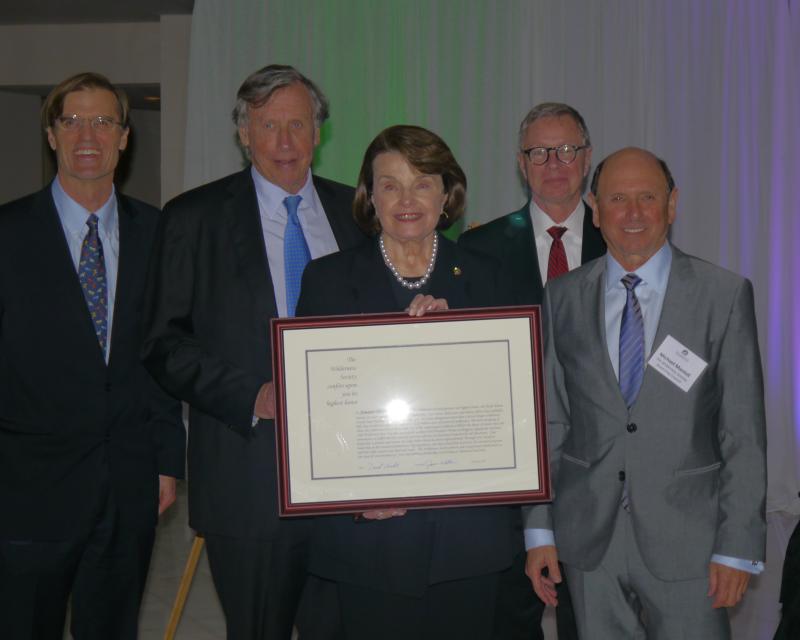
Melissa Pewett/TWS
2016 Ansel Adams Award
On February 24, 2016, The Wilderness Society honored Senator Dianne Feinstein at the National Museum of Women in the Arts in Washington DC.
More recipients:
Raúl Grijalva (2022)
Grijalva has served as a U.S. Representative from 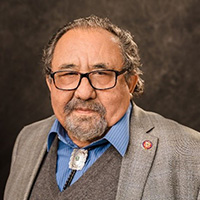 Arizona since 2003. He chaired the House Natural Resources Committee from 2019 to 2023 and is currently the committee’s ranking member. In addition, he has been the top Democrat on the Subcommittee on National Parks, Forests, and Public Lands since 2007. He was a principal architect of the bipartisan John D. Dingell, Jr. Conservation, Management, and Recreation Act of 2019, which permanently protected more than two million acres of lands and waters, including nearly 1.3 million acres of wilderness, and permanently reauthorized the Land and Water Conservation Fund. In addition, he helped pass the Great American Outdoors Act of 2020, which made funding for the Land and Water Conservation Fund permanent. Grijalva has been a stalwart champion of Native American and Indigenous rights, introducing legislation that strengthens tribal engagement and involvement in public lands decision-making, and he as fought to update outdated mining and drilling laws to ensure justice for the communities impacted by harmful and destructive resource extraction on federal lands.
Arizona since 2003. He chaired the House Natural Resources Committee from 2019 to 2023 and is currently the committee’s ranking member. In addition, he has been the top Democrat on the Subcommittee on National Parks, Forests, and Public Lands since 2007. He was a principal architect of the bipartisan John D. Dingell, Jr. Conservation, Management, and Recreation Act of 2019, which permanently protected more than two million acres of lands and waters, including nearly 1.3 million acres of wilderness, and permanently reauthorized the Land and Water Conservation Fund. In addition, he helped pass the Great American Outdoors Act of 2020, which made funding for the Land and Water Conservation Fund permanent. Grijalva has been a stalwart champion of Native American and Indigenous rights, introducing legislation that strengthens tribal engagement and involvement in public lands decision-making, and he as fought to update outdated mining and drilling laws to ensure justice for the communities impacted by harmful and destructive resource extraction on federal lands.
Jerry Brown (2019)
Brown served as the 34th and 39th Governor of 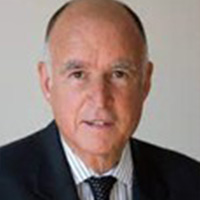 California, from 1975 to 1983 and from 2011 to 2019. Prior to that, he served as California’s Secretary of State, mayor of Oakland, and Attorney General of California. While in the governor’s office, Brown passed some of the most ambitious climate policies in the country. In 1976, he signed the nation’s first tax incentive for rooftop solar and established the South Coast Air Quality Management District to address air pollution in the Los Angeles region. During his most recent stint as governor, he set a goal to put 5 million electric cars on the road by 2030, implemented a gas tax to fund $50 billion in repairs to roads and bridges over 10 years, established a new regional groundwater sustainability agency, and extended California’s cap-and-trade program, which has raised $4 billion for clean energy, electric cars, and high-speed rail.
California, from 1975 to 1983 and from 2011 to 2019. Prior to that, he served as California’s Secretary of State, mayor of Oakland, and Attorney General of California. While in the governor’s office, Brown passed some of the most ambitious climate policies in the country. In 1976, he signed the nation’s first tax incentive for rooftop solar and established the South Coast Air Quality Management District to address air pollution in the Los Angeles region. During his most recent stint as governor, he set a goal to put 5 million electric cars on the road by 2030, implemented a gas tax to fund $50 billion in repairs to roads and bridges over 10 years, established a new regional groundwater sustainability agency, and extended California’s cap-and-trade program, which has raised $4 billion for clean energy, electric cars, and high-speed rail.
Dianne Feinstein (2016)
A former mayor of San Francisco from 1978 to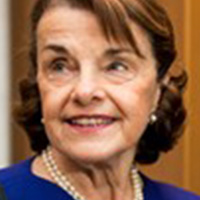 1988, Feinstein has served as a U.S. Senator from California since 1992. She has a long history as a champion for California’s wildlands. Among them, she authored and passed the California Desert Protection and Recreation Act as part of the 2019 Public Lands package (the John D. Dingell, Jr. Conservation, Management, and Recreation Act). This bill built upon the legacy of her landmark legislation, the California Desert Protection Act of 1994, which created 7.6 million acres of desert wilderness, the 1.6 million-acres Mojave National Preserve, and Death Valley and Joshua Tree National Parks. In 2016, she helped further expand protections for the desert by championing President Obama’s designation of the Sand to Snow, Mojave Trails, and Castle Mountains National Monuments. She also led efforts to restore Lake Tahoe, secured funding to fight drought and flooding in California, and helped pass six other laws that projected almost 400,000 acres.
1988, Feinstein has served as a U.S. Senator from California since 1992. She has a long history as a champion for California’s wildlands. Among them, she authored and passed the California Desert Protection and Recreation Act as part of the 2019 Public Lands package (the John D. Dingell, Jr. Conservation, Management, and Recreation Act). This bill built upon the legacy of her landmark legislation, the California Desert Protection Act of 1994, which created 7.6 million acres of desert wilderness, the 1.6 million-acres Mojave National Preserve, and Death Valley and Joshua Tree National Parks. In 2016, she helped further expand protections for the desert by championing President Obama’s designation of the Sand to Snow, Mojave Trails, and Castle Mountains National Monuments. She also led efforts to restore Lake Tahoe, secured funding to fight drought and flooding in California, and helped pass six other laws that projected almost 400,000 acres.
John Podesta (2015)
Podesta had a hand in the environmental 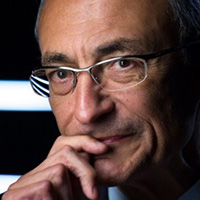 achievements of two presidential administrations. As White House Chief of Staff to President Clinton from 1998 to 2001, he advocated for 19 national monuments and conservation areas, and helped maneuver the 2001 Roadless Rule into law, protecting 58 million acres administered by the U.S. Forest Service. He returned to the White House under the Obama administration, serving informally as an advisor and formally as Counselor to the president (2014-2015), where he helped champion the creation or expansion of 29 national monuments. Podesta currently serves as Senior Advisor to President Biden for Clean Energy Innovation and Implementation, a role which he has held since September 2022.
achievements of two presidential administrations. As White House Chief of Staff to President Clinton from 1998 to 2001, he advocated for 19 national monuments and conservation areas, and helped maneuver the 2001 Roadless Rule into law, protecting 58 million acres administered by the U.S. Forest Service. He returned to the White House under the Obama administration, serving informally as an advisor and formally as Counselor to the president (2014-2015), where he helped champion the creation or expansion of 29 national monuments. Podesta currently serves as Senior Advisor to President Biden for Clean Energy Innovation and Implementation, a role which he has held since September 2022.
Max Baucus (2014)
As a U.S. Senator from Montana from 1978 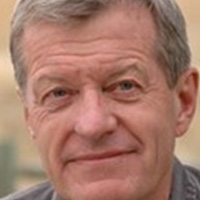 to 2014, Baucus served on the Committee on Environment and Public Works and the Committee on Agriculture, Nutrition and Forestry. A Congressional champion for the Land and Water Conservation Fund, a sponsor of the 1990 Clean Air Act Amendments, and a leader in protecting lands along the Rocky Mountain Front, he built a long, bipartisan record of accomplishment in environmental and natural resources policy. In 2008, he led the massive Montana Legacy Project—the largest private conservation purchase in history—which protected 310,000 acres of commercial timberland. His leadership also resulted in the protection of Yellowstone National Park from the proposed Crown Butte Mine, and the greater Yellowstone area through the Gallatin Land Exchange.
to 2014, Baucus served on the Committee on Environment and Public Works and the Committee on Agriculture, Nutrition and Forestry. A Congressional champion for the Land and Water Conservation Fund, a sponsor of the 1990 Clean Air Act Amendments, and a leader in protecting lands along the Rocky Mountain Front, he built a long, bipartisan record of accomplishment in environmental and natural resources policy. In 2008, he led the massive Montana Legacy Project—the largest private conservation purchase in history—which protected 310,000 acres of commercial timberland. His leadership also resulted in the protection of Yellowstone National Park from the proposed Crown Butte Mine, and the greater Yellowstone area through the Gallatin Land Exchange.
Ken Salazar (2013)
Salazar served as the Executive Director of 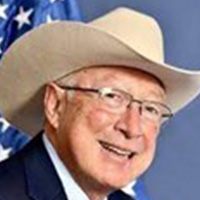 the Colorado Department of Natural Resources from 1990 to 1994 and as a U.S. Senator from Colorado from 2005 to 2009. He was appointed as the 50th U.S. Secretary of the Interior under President Obama, a role he served in from 2009 to 2013. At Interior, he began a large-scale effort within the department to ensure that the country’s public lands were inclusive of America’s tribal and minority communities, creating new monuments to honor Cesar Chavez, the Buffalo Soldiers, Harriet Tubman and the Underground Railroad, Fort Monroe, and sacred Native American sites like Chimney Rock in Colorado. He also prioritized the responsible development of renewable energy, greenlighting the development of over 11,000 megawatts of renewable energy on public lands.
the Colorado Department of Natural Resources from 1990 to 1994 and as a U.S. Senator from Colorado from 2005 to 2009. He was appointed as the 50th U.S. Secretary of the Interior under President Obama, a role he served in from 2009 to 2013. At Interior, he began a large-scale effort within the department to ensure that the country’s public lands were inclusive of America’s tribal and minority communities, creating new monuments to honor Cesar Chavez, the Buffalo Soldiers, Harriet Tubman and the Underground Railroad, Fort Monroe, and sacred Native American sites like Chimney Rock in Colorado. He also prioritized the responsible development of renewable energy, greenlighting the development of over 11,000 megawatts of renewable energy on public lands.
Bruce Babbitt (2011)
After serving as Governor of Arizona from 1978 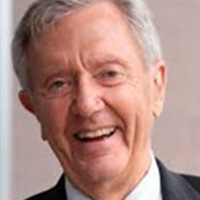 to 1987 and leading the League of Conservation Voters for eight years, Babbitt became the 47th U.S. Secretary of the Interior in 1993 under President Clinton, fulfilling that role until 2001. As Secretary, he participated in the creation of 22 new national monuments, from Grand Staircase-Escalante in Utah to Giant Sequoia in California. In 2000, he created the National Landscape Conservation System (now known as the National Conservation Lands), giving the Bureau of Land Management a way to manage its most significant landscapes, which today include 29 national monuments and 17 national conservation areas. Babbitt also led the creation of the Pacific Northwest Forest Management Plan, the restoration of the Florida Everglades, the passage of the California Desert Protection Act, the implementation of a new federal wild land fire policy, renewed support for the Endangered Species Act, as well as the reintroduction of wolves in Yellowstone National Park.
to 1987 and leading the League of Conservation Voters for eight years, Babbitt became the 47th U.S. Secretary of the Interior in 1993 under President Clinton, fulfilling that role until 2001. As Secretary, he participated in the creation of 22 new national monuments, from Grand Staircase-Escalante in Utah to Giant Sequoia in California. In 2000, he created the National Landscape Conservation System (now known as the National Conservation Lands), giving the Bureau of Land Management a way to manage its most significant landscapes, which today include 29 national monuments and 17 national conservation areas. Babbitt also led the creation of the Pacific Northwest Forest Management Plan, the restoration of the Florida Everglades, the passage of the California Desert Protection Act, the implementation of a new federal wild land fire policy, renewed support for the Endangered Species Act, as well as the reintroduction of wolves in Yellowstone National Park.
Michael Dombeck (2010)
Dombeck dedicated a quarter-century to managing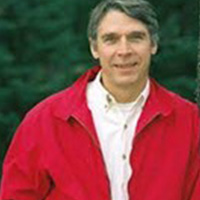 federal lands and natural resources with an impact on nearly 500 million acres of public lands. The only person to date to lead America’s two largest land management agencies—the Bureau of Land Management (Acting Director from 1994 to1997) and the U.S. Forest Service (Chief from 1997 to 2001)—he is most recognized for forging partnerships and crafting policies that integrated economics, science, and watershed protection to manage federal lands in the long-term public interest. At the BLM, he worked to increase accessibility to public lands for users and to promote ecosystem-based management and watershed restoration. At the USFS, he led the development of The Natural Resource Agenda for the agency. It focused on watershed health, sustainable forest and grasslands management, recreation, and forest roads policy, including the 2001 Roadless Rule he proposed, which protected 58 million acres of forest lands from development.
federal lands and natural resources with an impact on nearly 500 million acres of public lands. The only person to date to lead America’s two largest land management agencies—the Bureau of Land Management (Acting Director from 1994 to1997) and the U.S. Forest Service (Chief from 1997 to 2001)—he is most recognized for forging partnerships and crafting policies that integrated economics, science, and watershed protection to manage federal lands in the long-term public interest. At the BLM, he worked to increase accessibility to public lands for users and to promote ecosystem-based management and watershed restoration. At the USFS, he led the development of The Natural Resource Agenda for the agency. It focused on watershed health, sustainable forest and grasslands management, recreation, and forest roads policy, including the 2001 Roadless Rule he proposed, which protected 58 million acres of forest lands from development.
Norm Dicks (2008)
Dicks served as a U.S. Representative from 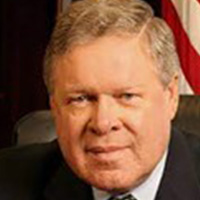 Washington state from 1977 to 2013. A co-chair of the International Conservation Caucus, he was also a member of the Sportsmen’s Caucus. As ranking member of the Interior Appropriations Subcommittee, he was a champion of initiatives on water quality, the protection of natural resources, and climate change. Among his achievements, he fought to add the 14,300-acre Clearwater Wilderness to the Washington State Wilderness Act of 1984, and he secured federal funding in 1990 to restore Washington salmon runs, clean up the Hanford nuclear site, and protect waterways. In 2008, he helped enact the Legacy Roads and Trails Remediation Program, securing $40 million to restore streams and improve roads, bridges, and trails on national forest lands.
Washington state from 1977 to 2013. A co-chair of the International Conservation Caucus, he was also a member of the Sportsmen’s Caucus. As ranking member of the Interior Appropriations Subcommittee, he was a champion of initiatives on water quality, the protection of natural resources, and climate change. Among his achievements, he fought to add the 14,300-acre Clearwater Wilderness to the Washington State Wilderness Act of 1984, and he secured federal funding in 1990 to restore Washington salmon runs, clean up the Hanford nuclear site, and protect waterways. In 2008, he helped enact the Legacy Roads and Trails Remediation Program, securing $40 million to restore streams and improve roads, bridges, and trails on national forest lands.
Sherwood Boehlert (2007)
Boehlert served as a U.S. Representative from 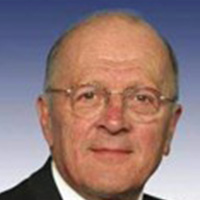 New York from 1983 to 2007. A prominent voice in the Republican party for the environment, he drew attention to the issue of climate change in the 1990s. As Chair of the House Science Committee from 2001 to 2007, he championed investments in the National Science Foundation, science and math education programs, and the Department of Energy’s Office of Science. Boehlert also sponsored the acid rain provisions of the Clean Air Act Amendments of 1990, and he was the Lead GOP sponsor of numerous Corporate Average Fuel Economy standards for light trucks and automobiles.
New York from 1983 to 2007. A prominent voice in the Republican party for the environment, he drew attention to the issue of climate change in the 1990s. As Chair of the House Science Committee from 2001 to 2007, he championed investments in the National Science Foundation, science and math education programs, and the Department of Energy’s Office of Science. Boehlert also sponsored the acid rain provisions of the Clean Air Act Amendments of 1990, and he was the Lead GOP sponsor of numerous Corporate Average Fuel Economy standards for light trucks and automobiles.
James M. Jeffords (2007)
Jeffords entered Congress in 1975, serving 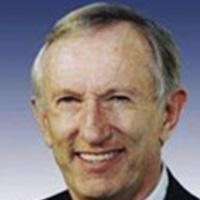 as a U.S. Representative from Vermont until 1989 and later as a U.S. Senator from Vermont from 1989 to 2007. He chaired the Senate Environment and Public Works Committee from 2001 to 2003 and was the co-founder of the Congressional Solar Coalition. He helped pass the sweeping California Desert Protection Act of 1994, fought oil drilling off the Florida coast and in the Great Lakes, and was highly critical of the Bush administration’s withdrawal from the Kyoto Protocol. Because the conservation stance of Congressional leaders, Jeffords, who had served in the House and Senate as a Republican since 1975, announced in 2001 that he was changing his party status to Independent.
as a U.S. Representative from Vermont until 1989 and later as a U.S. Senator from Vermont from 1989 to 2007. He chaired the Senate Environment and Public Works Committee from 2001 to 2003 and was the co-founder of the Congressional Solar Coalition. He helped pass the sweeping California Desert Protection Act of 1994, fought oil drilling off the Florida coast and in the Great Lakes, and was highly critical of the Bush administration’s withdrawal from the Kyoto Protocol. Because the conservation stance of Congressional leaders, Jeffords, who had served in the House and Senate as a Republican since 1975, announced in 2001 that he was changing his party status to Independent.
Maria Cantwell (2006)
A U.S. Senator from Washington since 2001, 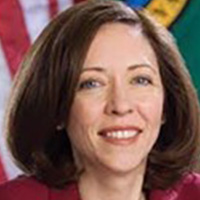 Cantwell also served as a U.S. Representative from Washington from 1993 to 1995. During her first term in December 2005, Cantwell scored a major victory for the Arctic National Wildlife Refuge, blocking Alaska Senator Ted Stevens's efforts to allow drilling there. She is a leading champion on ocean acidification science, has advocated for alternative energy research, and has fought to protect her state’s forests and waters from logging and the construction of paved roads. In 2019, she was one of eight senators to sign a bipartisan letter to congressional leadership, requesting full and lasting funding of the Land and Water Conservation Act.
Cantwell also served as a U.S. Representative from Washington from 1993 to 1995. During her first term in December 2005, Cantwell scored a major victory for the Arctic National Wildlife Refuge, blocking Alaska Senator Ted Stevens's efforts to allow drilling there. She is a leading champion on ocean acidification science, has advocated for alternative energy research, and has fought to protect her state’s forests and waters from logging and the construction of paved roads. In 2019, she was one of eight senators to sign a bipartisan letter to congressional leadership, requesting full and lasting funding of the Land and Water Conservation Act.
Fritz Hollings (2005)
Hollings was the Governor of South Carolina from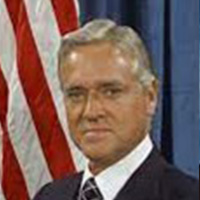 1959 to 1963 and served as a U.S. Senator from South Carolina from 1966 to 2005. Over his long career in politics, he was a champion for ocean policy and conservation, playing a major role in the establishment of the National Oceanic and Atmospheric Administration (NOAA) and in the enactment of the Marine Protection Act of 1972 and the Coastal Zone Management Act of 1972. Hollings also fought drilling in the Arctic National Wildlife Refuge, sponsored the Congaree National Park Act of 2003 and the Coastal and Estuarine Land Protection Act, and co-sponsored the Roadless Area Conservation Act of 2003.
1959 to 1963 and served as a U.S. Senator from South Carolina from 1966 to 2005. Over his long career in politics, he was a champion for ocean policy and conservation, playing a major role in the establishment of the National Oceanic and Atmospheric Administration (NOAA) and in the enactment of the Marine Protection Act of 1972 and the Coastal Zone Management Act of 1972. Hollings also fought drilling in the Arctic National Wildlife Refuge, sponsored the Congaree National Park Act of 2003 and the Coastal and Estuarine Land Protection Act, and co-sponsored the Roadless Area Conservation Act of 2003.
Nick Rahall II (2004)
Rahall served as a U.S. Representative from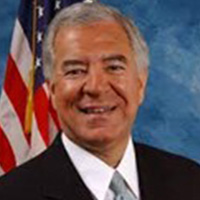 West Virginia from 1977 to 2015. A quarter of the bills he sponsored while in Congress related to public lands and natural resources. As a member of the House Natural Resources Committee from 2001 to 2011, he advocated for the expansion of wilderness areas in West Virginia under the Wild Monongahela Act (included in the Omnibus Public Land Management Act of 2009). He also authored legislation that helped establish the New River Gorge National River and the Gauley River National Recreation Area. A leader from a coal state, he led mining law reform. Rahall introduced the Energy Independence and Security Act of 2007, a bill that aimed to increase U.S. energy security, develop renewable energy, and improved vehicle fuel economy.
West Virginia from 1977 to 2015. A quarter of the bills he sponsored while in Congress related to public lands and natural resources. As a member of the House Natural Resources Committee from 2001 to 2011, he advocated for the expansion of wilderness areas in West Virginia under the Wild Monongahela Act (included in the Omnibus Public Land Management Act of 2009). He also authored legislation that helped establish the New River Gorge National River and the Gauley River National Recreation Area. A leader from a coal state, he led mining law reform. Rahall introduced the Energy Independence and Security Act of 2007, a bill that aimed to increase U.S. energy security, develop renewable energy, and improved vehicle fuel economy.
Harry Reid (2004)
First serving as a U.S. Representative from 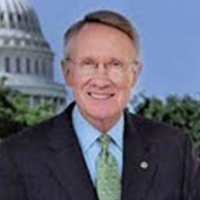 Nevada from 1983 to 1987 and as a U.S. Senator from Nevada from 1987 to 2017, Reid became the Senate Majority Leader in 2007 and held the role until 2015. A champion for Indigenous groups and environmentalists in his home state, he helped secured protection of 5.1 million acres of public lands in Nevada, including Tule Springs Fossil Beds National Monument, the Basin and Range National Monument, and the Gold Butte National Monument. He authored five laws protecting 3.5 million acres as wilderness, including the Nevada Wilderness Protection Act of 1989. As Senate Majority Leader, he helped pass the Omnibus Public Land Management Act of 2009, which protected two million acres of wilderness in nine states.
Nevada from 1983 to 1987 and as a U.S. Senator from Nevada from 1987 to 2017, Reid became the Senate Majority Leader in 2007 and held the role until 2015. A champion for Indigenous groups and environmentalists in his home state, he helped secured protection of 5.1 million acres of public lands in Nevada, including Tule Springs Fossil Beds National Monument, the Basin and Range National Monument, and the Gold Butte National Monument. He authored five laws protecting 3.5 million acres as wilderness, including the Nevada Wilderness Protection Act of 1989. As Senate Majority Leader, he helped pass the Omnibus Public Land Management Act of 2009, which protected two million acres of wilderness in nine states.
John Kerry and Joseph Lieberman (2002)
Following his service as a U.S. Senator from 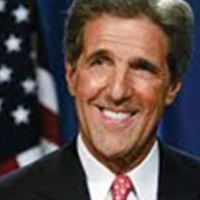 Massachusetts from 1985 to 2013, Kerry became the 68th U.S. Secretary of State from 2013 to 2017 under President Obama. As senator, he fought drilling in the Arctic National Wildlife Refuge, sponsored amendments to strengthen the Clean Water Act in 1990 and the Marine Mammal Protection Act in 1994, and sponsored a bill to designate portions of three Massachusetts rivers as part of the National Wild and Scenic Rivers System in 1998. As Secretary of State, Kerry helped negotiate the Paris Climate Accords in 2016. Since 2021, he has served as the first U.S. Special Presidential Envoy for Climate.
Massachusetts from 1985 to 2013, Kerry became the 68th U.S. Secretary of State from 2013 to 2017 under President Obama. As senator, he fought drilling in the Arctic National Wildlife Refuge, sponsored amendments to strengthen the Clean Water Act in 1990 and the Marine Mammal Protection Act in 1994, and sponsored a bill to designate portions of three Massachusetts rivers as part of the National Wild and Scenic Rivers System in 1998. As Secretary of State, Kerry helped negotiate the Paris Climate Accords in 2016. Since 2021, he has served as the first U.S. Special Presidential Envoy for Climate.
Lieberman served as a U.S. Senator from 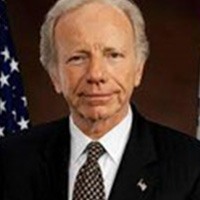 Connecticut from 1989 to 2013. While in Congress, he was a member of the International Conservation Caucus. He also served on the Senate Environment and Public Works Committee, where he chaired a global warming subcommittee. He fought to prevent drilling in the Arctic National Wildlife Refuge, and he co-sponsored bills to protect the Long Island Sound and to help end the abuse of big cat species in captivity by banning private possession.
Connecticut from 1989 to 2013. While in Congress, he was a member of the International Conservation Caucus. He also served on the Senate Environment and Public Works Committee, where he chaired a global warming subcommittee. He fought to prevent drilling in the Arctic National Wildlife Refuge, and he co-sponsored bills to protect the Long Island Sound and to help end the abuse of big cat species in captivity by banning private possession.
John Lewis (2001)
A towering icon of the civil rights movement, Lewis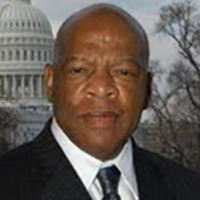 was also a champion of the environmental justice movement and a defender of national parks and public lands. He served as a U.S. Representative from Georgia from 1987 to 2020. He was a long-time supporter of stronger funding for the Environmental Protection Agency and advocated for strengthening the Clean Water and Clean Air Acts. He introduced important legislation, including the Environmental Justice Act, the Martin Luther King, Jr. National Historical Park Act, and the Great American Outdoors Act, which included permanent reauthorization of the Land and Water Conservation Fund. He also co-sponsored bills such as the Udall-Eisenhower Arctic Wilderness Act, the Saving America's Pollinators Act,
was also a champion of the environmental justice movement and a defender of national parks and public lands. He served as a U.S. Representative from Georgia from 1987 to 2020. He was a long-time supporter of stronger funding for the Environmental Protection Agency and advocated for strengthening the Clean Water and Clean Air Acts. He introduced important legislation, including the Environmental Justice Act, the Martin Luther King, Jr. National Historical Park Act, and the Great American Outdoors Act, which included permanent reauthorization of the Land and Water Conservation Fund. He also co-sponsored bills such as the Udall-Eisenhower Arctic Wilderness Act, the Saving America's Pollinators Act,
Lewis wrote the introduction to The Wilderness Society’s 2004 publication Why Wilderness? What the Wild Lands of the Southeastern Appalachians Mean to the People of the Southeast.
David Obey and John Porter (2000)
Obey was a U.S. Representative from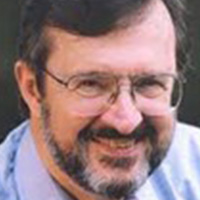 Wisconsin from 1969 to 2011. He chaired the House Appropriations Committee from 1994 to 1995 and from 2007 to 2011, serving as its ranking member from 1995 to 2007. In the 2010 Interior Department appropriations bill, he secured a House and Senate conference committee agreement to include a historic $475 million in funding for the restoration of the Great Lakes.
Wisconsin from 1969 to 2011. He chaired the House Appropriations Committee from 1994 to 1995 and from 2007 to 2011, serving as its ranking member from 1995 to 2007. In the 2010 Interior Department appropriations bill, he secured a House and Senate conference committee agreement to include a historic $475 million in funding for the restoration of the Great Lakes.
Porter first served in the Illinois House of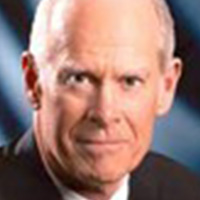 Representatives from 1973 to 1979, and then as a U.S. Representative of Illinois from 1980 to 2001. A fiscally conservative Republican, he ardently supported environmental legislation, including the National Park System Protection Act of 1982, numerous wilderness bills, and amendments to strengthen the Safe Drinking Water Act in 1986, the Clean Water Act in 1987, the Clean Air Act in 1990, and the Land and Water Conservation Fund in 1999. He also opposed attempts to weaken the Endangered Species Act.
Representatives from 1973 to 1979, and then as a U.S. Representative of Illinois from 1980 to 2001. A fiscally conservative Republican, he ardently supported environmental legislation, including the National Park System Protection Act of 1982, numerous wilderness bills, and amendments to strengthen the Safe Drinking Water Act in 1986, the Clean Water Act in 1987, the Clean Air Act in 1990, and the Land and Water Conservation Fund in 1999. He also opposed attempts to weaken the Endangered Species Act.
Katie McGinty (1999)
McGinty was Chair of the White House Council on Environmental Quality (CEQ), the first woman ever to hold the position. She served in this role from 1995 to 1998, having been appointed as President Clinton’s Deputy Assistant in 1993. While leading CEQ, she helped deliver major gains on renewable energy and clean air and water. Prior to her time in the Clinton administration, her career launched when she was awarded the Congressional Fellowship of the American Chemical Society and went to work for then-Senator Al Gore as his environmental advisor. Later, as Pennsylvania’s Secretary of Environmental Protection from 2003 to 2008, she helped to bring leading renewable energy companies to Pennsylvania, creating 3,000 jobs while supporting the regulation of fracking.
Environmental Quality (CEQ), the first woman ever to hold the position. She served in this role from 1995 to 1998, having been appointed as President Clinton’s Deputy Assistant in 1993. While leading CEQ, she helped deliver major gains on renewable energy and clean air and water. Prior to her time in the Clinton administration, her career launched when she was awarded the Congressional Fellowship of the American Chemical Society and went to work for then-Senator Al Gore as his environmental advisor. Later, as Pennsylvania’s Secretary of Environmental Protection from 2003 to 2008, she helped to bring leading renewable energy companies to Pennsylvania, creating 3,000 jobs while supporting the regulation of fracking.
Dale Bumpers (1998)
Bumpers was Governor of Arkansas from 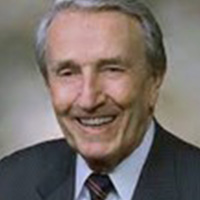 1971 to 1975 and served as a U.S. Senator from Arkansas from 1975 to 1999. As governor, he dramatically increased investment in state parks, stopped the channelization of 232 miles of the Cache River, and spearheaded the creation of an 80-mile corridor connecting the Cache River and White River National Wildlife refuges. As senator, Bumpers facilitated a land exchange that swapped Idaho timberland for bottomland hardwood forests and wetlands in Arkansas, adding 41,000 acres to the Cache River and White River refuges. In 2014, the latter was renamed to the Dale Bumpers White River National Wildlife Refuge in his honor.
1971 to 1975 and served as a U.S. Senator from Arkansas from 1975 to 1999. As governor, he dramatically increased investment in state parks, stopped the channelization of 232 miles of the Cache River, and spearheaded the creation of an 80-mile corridor connecting the Cache River and White River National Wildlife refuges. As senator, Bumpers facilitated a land exchange that swapped Idaho timberland for bottomland hardwood forests and wetlands in Arkansas, adding 41,000 acres to the Cache River and White River refuges. In 2014, the latter was renamed to the Dale Bumpers White River National Wildlife Refuge in his honor.
Al Gore (1997)
The 45th U.S. Vice President from 1993 to 2001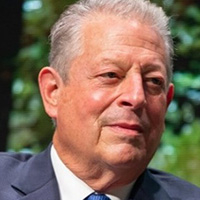 under President Clinton, Gore began his service as an elected official in 1977, first as a U.S. Representative from Tennessee until 1985 and then as a U.S. Senator from Tennessee from 1985 to 1993. Gore prioritized the climate crisis and its solutions throughout his career in Congress, holding the first of many congressional hearings on man-made global warming. As Vice President, he helped broker the Kyoto Protocol, the first major international agreement to reduce greenhouse gas emissions. His presentations on climate change were the subject of the Academy Award winning documentary, An Inconvenient Truth (2006), for which he was also the screenwriter. Gore is founder and chair of The Climate Reality Project, as well as the co-founder and chair of Generation Investment Management. In 2007, he was awarded the Nobel Peace Prize, along with the Intergovernmental Panel on Climate Change, for “informing the world of the dangers posed by climate change.”
under President Clinton, Gore began his service as an elected official in 1977, first as a U.S. Representative from Tennessee until 1985 and then as a U.S. Senator from Tennessee from 1985 to 1993. Gore prioritized the climate crisis and its solutions throughout his career in Congress, holding the first of many congressional hearings on man-made global warming. As Vice President, he helped broker the Kyoto Protocol, the first major international agreement to reduce greenhouse gas emissions. His presentations on climate change were the subject of the Academy Award winning documentary, An Inconvenient Truth (2006), for which he was also the screenwriter. Gore is founder and chair of The Climate Reality Project, as well as the co-founder and chair of Generation Investment Management. In 2007, he was awarded the Nobel Peace Prize, along with the Intergovernmental Panel on Climate Change, for “informing the world of the dangers posed by climate change.”
Bruce F. Vento (1994)
Vento served in the Minnesota House of 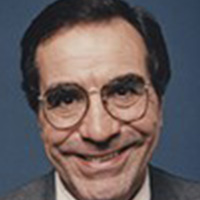 Representatives from 1971 to 1976, and then as a U.S. Representative from Minnesota from 1977 to 2000. He chaired the Resources Subcommittee on National Parks and Public Lands from 1985 to 1994, serving on that panel and the Resource Subcommittee on Fisheries Conservation, Wildlife and Oceans until his death in 2000. During his tenure, he steered into law more than 300 bills that preserved natural lands from the Florida Everglades to the coastal plain of the Arctic National Wildlife Refuge. Vento also fought for restrictions on logging to protect the spotted owl in the Pacific Northwest, higher fees for grazing on public lands, and more federal aid for urban parks.
Representatives from 1971 to 1976, and then as a U.S. Representative from Minnesota from 1977 to 2000. He chaired the Resources Subcommittee on National Parks and Public Lands from 1985 to 1994, serving on that panel and the Resource Subcommittee on Fisheries Conservation, Wildlife and Oceans until his death in 2000. During his tenure, he steered into law more than 300 bills that preserved natural lands from the Florida Everglades to the coastal plain of the Arctic National Wildlife Refuge. Vento also fought for restrictions on logging to protect the spotted owl in the Pacific Northwest, higher fees for grazing on public lands, and more federal aid for urban parks.
George Miller (1992)
Miller served as a U.S. Representative from 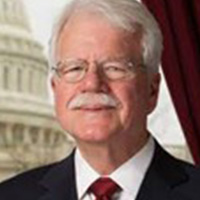 California from 1975 to 2015 and as Chair of the House Natural Resources Committee from 1991 to 1995, staying on as ranking member until 2000. As chief sponsor of the Central Valley Project Improvement Act of 1992, he pressed the Bureau of Reclamation to better protect the region’s fish and wildlife populations. He also advocated for the California Desert Protection Act of 1994, creating 7.6 million acres of desert wilderness, the 1.6 million-acres Mojave National Preserve, and Death Valley and Joshua Tree National Parks. In addition, Miller served on the Congressional Wildlife Refuge Caucus, a bi-partisan organization formed to support the Refuge system through legislation, funding, and education.
California from 1975 to 2015 and as Chair of the House Natural Resources Committee from 1991 to 1995, staying on as ranking member until 2000. As chief sponsor of the Central Valley Project Improvement Act of 1992, he pressed the Bureau of Reclamation to better protect the region’s fish and wildlife populations. He also advocated for the California Desert Protection Act of 1994, creating 7.6 million acres of desert wilderness, the 1.6 million-acres Mojave National Preserve, and Death Valley and Joshua Tree National Parks. In addition, Miller served on the Congressional Wildlife Refuge Caucus, a bi-partisan organization formed to support the Refuge system through legislation, funding, and education.
George J. Mitchell (1991)
As a U.S. Attorney and a federal district court judge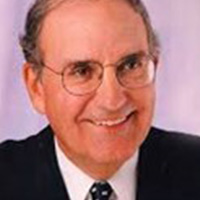 in Maine, Mitchell took part in enforcing the tough new environmental laws of the 1970s. In 1980, he began serving as a U.S. Senator from Maine and then as Senate Majority Leader from 1989 to 1995. As a member of the Environment and Public Works Committee, the Subcommittee on Clean Water, Fisheries and Wildlife, and the Subcommittee on Water Resources, Transportation, and Economic Development, Mitchell pushed environmental standards even higher, helping to pass the Water Quality Act of 1987 and the Oil Pollution Act of 1990, and leading intense negotiations to enact the Clean Air Act Amendments of 1990. He is the author of World on Fire: Saving an Endangered Earth (1991).
in Maine, Mitchell took part in enforcing the tough new environmental laws of the 1970s. In 1980, he began serving as a U.S. Senator from Maine and then as Senate Majority Leader from 1989 to 1995. As a member of the Environment and Public Works Committee, the Subcommittee on Clean Water, Fisheries and Wildlife, and the Subcommittee on Water Resources, Transportation, and Economic Development, Mitchell pushed environmental standards even higher, helping to pass the Water Quality Act of 1987 and the Oil Pollution Act of 1990, and leading intense negotiations to enact the Clean Air Act Amendments of 1990. He is the author of World on Fire: Saving an Endangered Earth (1991).
Gaylord Nelson (1990)
Best known as the father of Earth Day, Nelson was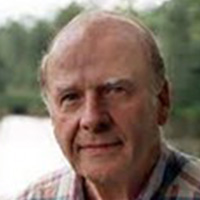 a leading figure in the fight against environmental degradation. He served as a Wisconsin Senator from 1949 to 1959, Governor of Wisconsin from 1959 to 1963, and a U.S. Senator from Wisconsin from 1963 to 1981, Among his many accomplishments in the Senate, he sponsored environmental legislation, including the Wilderness Act of 1964; and he authored the National Trails System Act of 1968, which designated the Pacific Crest Trail and the Appalachian Trail as the first national scenic trails. In 1969, he devised a plan to send a message to Washington that public opinion was solidly behind a bold environmental agenda, proposing April 22, 1970 as a national teach-in on the environment. Earth Day, as it came to be known, kicked off a decade of radical legislative reforms that Nelson had a hand in, including the Clean Air Act of 1970, the Clean Water Act of 1972, the Endangered Species Act of 1973, and more. Following his political career, he served as Counselor of The Wilderness Society from 1981 until his death in 2005. Nelson was awarded the Presidential Medal of Freedom in 1995.
a leading figure in the fight against environmental degradation. He served as a Wisconsin Senator from 1949 to 1959, Governor of Wisconsin from 1959 to 1963, and a U.S. Senator from Wisconsin from 1963 to 1981, Among his many accomplishments in the Senate, he sponsored environmental legislation, including the Wilderness Act of 1964; and he authored the National Trails System Act of 1968, which designated the Pacific Crest Trail and the Appalachian Trail as the first national scenic trails. In 1969, he devised a plan to send a message to Washington that public opinion was solidly behind a bold environmental agenda, proposing April 22, 1970 as a national teach-in on the environment. Earth Day, as it came to be known, kicked off a decade of radical legislative reforms that Nelson had a hand in, including the Clean Air Act of 1970, the Clean Water Act of 1972, the Endangered Species Act of 1973, and more. Following his political career, he served as Counselor of The Wilderness Society from 1981 until his death in 2005. Nelson was awarded the Presidential Medal of Freedom in 1995.
William V. Roth, Jr. (1989)
Roth served as a U.S. Representative from 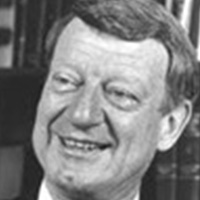 Delaware from 1967 to 1970 and a U.S. Senator from Delaware from 1971 to 2001. A noted fiscal conservative and a strong supporter of environmental protections, he introduced and supported legislation to promote reforestation, species preservation, wilderness, wetlands, farmland, and national parks. After the 1989 Exxon Valdez disaster, he sponsored legislation opposing petroleum exploration in Alaska. In 1991, Roth cosponsored, with then-Senator Al Gore, a senate resolution to designate April 22 as Earth Day.
Delaware from 1967 to 1970 and a U.S. Senator from Delaware from 1971 to 2001. A noted fiscal conservative and a strong supporter of environmental protections, he introduced and supported legislation to promote reforestation, species preservation, wilderness, wetlands, farmland, and national parks. After the 1989 Exxon Valdez disaster, he sponsored legislation opposing petroleum exploration in Alaska. In 1991, Roth cosponsored, with then-Senator Al Gore, a senate resolution to designate April 22 as Earth Day.
Alan Cranston (1989)
Cranston began his career as a journalist before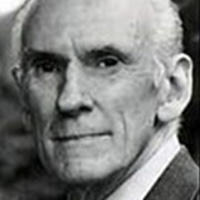 serving as a U.S. Senator from California from 1969 to 1993. He coauthored and introduced the California Desert Protection Act of 1994, seeking to rectify the reckless and uncontrolled problems of off-road vehicle use, mining, grazing, and urban development threatening the desert. The legislation classified 7.6 million acres of desert as protected wilderness, set aside 1.6 million acres as the Mojave National Preserve, and expanded and redesignated the Death Valley and Joshua Tree National Monuments as National Parks.
serving as a U.S. Senator from California from 1969 to 1993. He coauthored and introduced the California Desert Protection Act of 1994, seeking to rectify the reckless and uncontrolled problems of off-road vehicle use, mining, grazing, and urban development threatening the desert. The legislation classified 7.6 million acres of desert as protected wilderness, set aside 1.6 million acres as the Mojave National Preserve, and expanded and redesignated the Death Valley and Joshua Tree National Monuments as National Parks.
John H. Chafee (1988)
Chafee was Governor of Rhode Island from 1962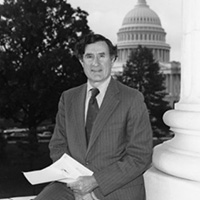 to 1969, U.S. Secretary of the Navy from 1969 to 1972, and a U.S. Senator from Rhode Island from 1976 to 1999. As chair of the Senate Committee on Environment and Public Works, he made environmental matters a chief concern. Among them: advocating for amendments to strengthen the Safe Drinking Water Act in 1986 and the Clean Air Act in 1990, spearheading the 1980 Superfund program and the Oil Pollution Act of 1990, and writing the Coastal Barrier Resources Act of 1982, which established the Coastal Barrier Resources System (later renamed in his honor). As a result of his work, Chafee was a recipient of the Lady Bird Johnson Environmental Award.
to 1969, U.S. Secretary of the Navy from 1969 to 1972, and a U.S. Senator from Rhode Island from 1976 to 1999. As chair of the Senate Committee on Environment and Public Works, he made environmental matters a chief concern. Among them: advocating for amendments to strengthen the Safe Drinking Water Act in 1986 and the Clean Air Act in 1990, spearheading the 1980 Superfund program and the Oil Pollution Act of 1990, and writing the Coastal Barrier Resources Act of 1982, which established the Coastal Barrier Resources System (later renamed in his honor). As a result of his work, Chafee was a recipient of the Lady Bird Johnson Environmental Award.
Sidney Yates (1987)
Yates served as a U.S. Representative from Illinois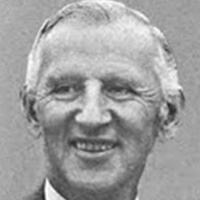 from 1949 to 1963 and 1965 to 1999. He chaired the Appropriations Subcommittee on the Department of the Interior and Related Agencies from 1975 to 1995 and used its mechanisms to create national parks and protect wilderness areas, seashores, lakeshores, as well as some of the nation’s last pristine rivers. Yates was awarded the Presidential Citizens Medal in 1993 and the Four Freedoms Award for Freedom of Speech in 1997.
from 1949 to 1963 and 1965 to 1999. He chaired the Appropriations Subcommittee on the Department of the Interior and Related Agencies from 1975 to 1995 and used its mechanisms to create national parks and protect wilderness areas, seashores, lakeshores, as well as some of the nation’s last pristine rivers. Yates was awarded the Presidential Citizens Medal in 1993 and the Four Freedoms Award for Freedom of Speech in 1997.
Stewart L. Udall (1986)
A pioneer of the environmental movement, Udall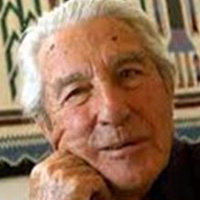 served as a U.S. Representative from Arizona from 1955 to 1961 and as U.S. Secretary of the Interior from 1961 to 1969. During his tenure at Interior, he oversaw the addition of four national parks, six national monuments, eight national seashores and lakeshores, nine national recreation areas, 20 national historic sites, and 56 national wildlife refuges. He also played a key role in the enactment of the Clear Air, Water Quality and Clean Water Restoration Acts and Amendments, the Wilderness Act of 1964, the Endangered Species Preservation Act of 1966, the Land and Water Conservation Fund Act of 1965, and the Wild and Scenic Rivers Act of 1968. His 1963 book The Quiet Crisis helped trigger the modern environmental movement.
served as a U.S. Representative from Arizona from 1955 to 1961 and as U.S. Secretary of the Interior from 1961 to 1969. During his tenure at Interior, he oversaw the addition of four national parks, six national monuments, eight national seashores and lakeshores, nine national recreation areas, 20 national historic sites, and 56 national wildlife refuges. He also played a key role in the enactment of the Clear Air, Water Quality and Clean Water Restoration Acts and Amendments, the Wilderness Act of 1964, the Endangered Species Preservation Act of 1966, the Land and Water Conservation Fund Act of 1965, and the Wild and Scenic Rivers Act of 1968. His 1963 book The Quiet Crisis helped trigger the modern environmental movement.
Cecil D. Andrus (1985)
Andrus was Governor of Idaho from 1971 to 1977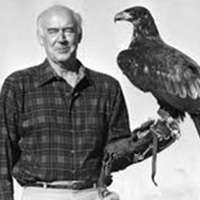 and again from 1987 to 1995. He served as U.S. Secretary of the Interior from 1977 to 1981. As governor, he played a key role in winning Congressional support for federal designation of the Sawtooth Wilderness Area in 1972. He also sued the federal government to modify federal dams to protect Snake River Salmon under the Endangered Species Act. At Interior, he led passage of the Redwood National Park Expansion Act in 1978 and played a key role in efforts to pass the Alaska Lands Act of 1980.
and again from 1987 to 1995. He served as U.S. Secretary of the Interior from 1977 to 1981. As governor, he played a key role in winning Congressional support for federal designation of the Sawtooth Wilderness Area in 1972. He also sued the federal government to modify federal dams to protect Snake River Salmon under the Endangered Species Act. At Interior, he led passage of the Redwood National Park Expansion Act in 1978 and played a key role in efforts to pass the Alaska Lands Act of 1980.
Morris K. Udall (1984)
Udall served as a U.S. Representative from Arizona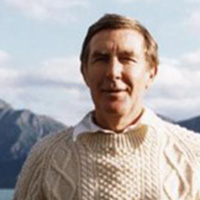 from 1961 to 1991. As Chair of the Committee on Interior and Insular Affairs, he helped write and pass the Alaska Lands Act of 1980 and advanced landmark legislation addressing nuclear waste management in 1982. Udall also fought for the expansion of the National Park System and ushered legislation through Congress that added 8 million acres to the National Wilderness Preservation System across 20 states.
from 1961 to 1991. As Chair of the Committee on Interior and Insular Affairs, he helped write and pass the Alaska Lands Act of 1980 and advanced landmark legislation addressing nuclear waste management in 1982. Udall also fought for the expansion of the National Park System and ushered legislation through Congress that added 8 million acres to the National Wilderness Preservation System across 20 states.
Philip Burton (1983)
Burton served as a U.S. Representative from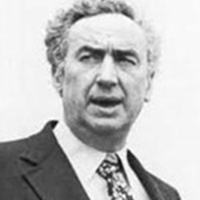 California from 1964 to 1983. A strong advocate for the environment, he helped establish the Point Reyes National Seashore in 1962 while a member of the California State Assembly. After his death, and in recognition of his instrumental work on the California Wilderness Act of 1984, the Seashore’s wilderness area was renamed the Philip Burton Wilderness. Burton also wrote and introduced the legislation that created the Golden Gate National Recreation Area in 1972, and he sponsored a law that later enlarged Redwood National Park in 1987.
California from 1964 to 1983. A strong advocate for the environment, he helped establish the Point Reyes National Seashore in 1962 while a member of the California State Assembly. After his death, and in recognition of his instrumental work on the California Wilderness Act of 1984, the Seashore’s wilderness area was renamed the Philip Burton Wilderness. Burton also wrote and introduced the legislation that created the Golden Gate National Recreation Area in 1972, and he sponsored a law that later enlarged Redwood National Park in 1987.
John F. Seiberling (1982)
Seiberling served as a U.S. Representative from 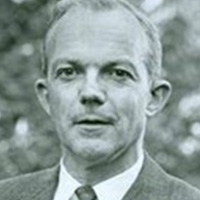 Ohio from 1971 to 1987. Considered to be the “Founding Father” of Ohio’s Cuyahoga National Park, he played a leadership role in Cuyahoga Valley’s initial protection as a national recreation area in 1974. He also fought for national park units in urban areas such as Scranton and Atlanta, attempted to reform strip mining in Appalachia, challenged the Bureau of Land Management to prioritize conservation, and labored on committees that informed and shaped the Alaska Lands Act of 1980.
Ohio from 1971 to 1987. Considered to be the “Founding Father” of Ohio’s Cuyahoga National Park, he played a leadership role in Cuyahoga Valley’s initial protection as a national recreation area in 1974. He also fought for national park units in urban areas such as Scranton and Atlanta, attempted to reform strip mining in Appalachia, challenged the Bureau of Land Management to prioritize conservation, and labored on committees that informed and shaped the Alaska Lands Act of 1980.
Jimmy Carter (1981)
The 38th U.S. President, Carter was a champion of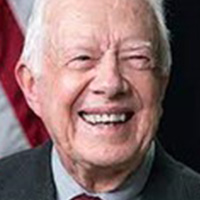 renewable energy and conservation. In 1978, he used the Antiquities Act to create 17 national monuments, providing interim protection for 56 million acres of public land in Alaska. He then spearheaded the Alaska National Interest Lands Conservation Act of 1980, creating more than 157 million acres of wilderness, national wildlife refuges, and national parks. It was, and still is, the largest single expansion of protected lands in American history.
renewable energy and conservation. In 1978, he used the Antiquities Act to create 17 national monuments, providing interim protection for 56 million acres of public land in Alaska. He then spearheaded the Alaska National Interest Lands Conservation Act of 1980, creating more than 157 million acres of wilderness, national wildlife refuges, and national parks. It was, and still is, the largest single expansion of protected lands in American history.
Ansel Adams (1980)
Noted landscape photographer,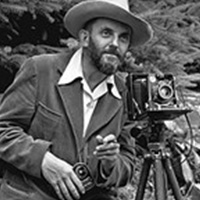 famed for images of the American West, Adams was as an unremitting activist for the cause of wilderness and the environment. He contracted with the Department of the Interior to photograph national parks and is credited with helping to expand the National Park System. His work also helped secure passage of the Wilderness Act of 1964, legislation which included the Ansel Adams Wilderness Area in California. He was awarded the Presidential Medal of Freedom in 1980, the Department of the Interior’s Conservation Service Award in 1968, and the Sierra Club John Muir Award in 1963.
famed for images of the American West, Adams was as an unremitting activist for the cause of wilderness and the environment. He contracted with the Department of the Interior to photograph national parks and is credited with helping to expand the National Park System. His work also helped secure passage of the Wilderness Act of 1964, legislation which included the Ansel Adams Wilderness Area in California. He was awarded the Presidential Medal of Freedom in 1980, the Department of the Interior’s Conservation Service Award in 1968, and the Sierra Club John Muir Award in 1963.
